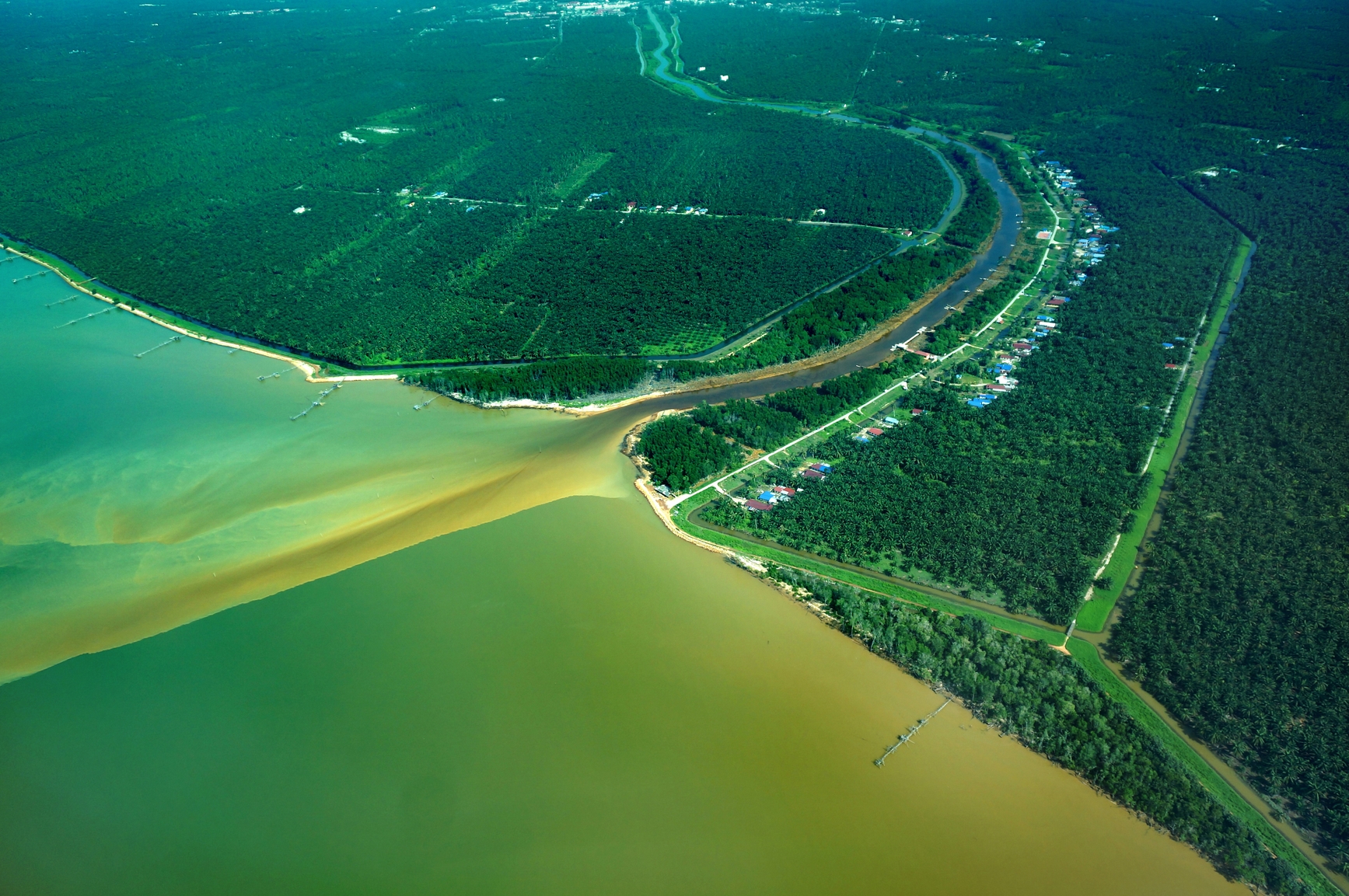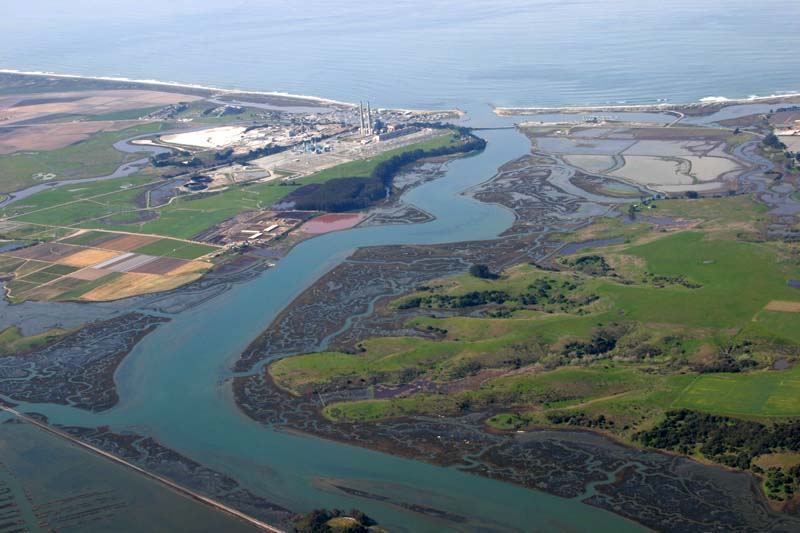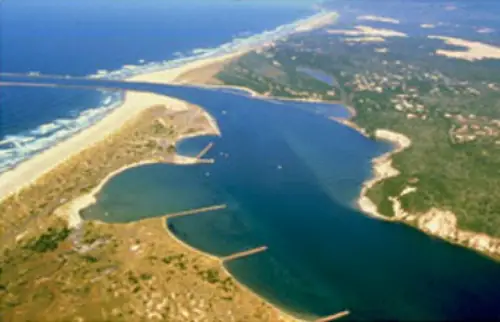Estuary
An estuary (lat. estuary " bay, the flood exposed river mouth " ) is the wide body of water at the mouth of a river or stream at a mostly flat profound reduction coast.
According to the Leeuwarden Declaration the landward limits of estuaries are in the German Bight, defined as the average limit of brackish water to fresh water and the seaward limits as the average position of the 10 PSU isohaline.
At tidal coasts, one finds typical funnel-shaped estuaries such as the Lower Elbe. But the mouth of lagoons, which are found to reduce coasts without strong tides are called estuaries, such as the Unterwarnow. An elevation coastal and / or at high bed load, however, deltas prevail. In the EU Water Framework Directive, the additional category transitional waters was created next to rivers, still waters and coastal waters of estuaries. The application is still in development.
In recent times, the term estuary is also applied to such estuaries that do not meet all definition conditions: So the Ems estuary is funnel-shaped, sub - Warnow and sub -Trave are not dependent on tides, and indoor and Außenjade are strictly due to the high salinity not taken the lower river jade.
- 2.1 Estuary
- 2.2 lagoon mouth
- 2.3 transitional forms
Formation and characteristics
Funnel -shaped estuaries
Typical Estuaries are formed under the influence of tidal currents, the river mouth is flared: These tidenbeeinflussten transition zones between marine and fluvial areas of the tides cause a pendulum motion of times larger volume than the seaward discharge flow of the river water. The high flow velocities associated with the pendulum motion to ensure that the erosion is greater than the sedimentation. The heavy salt water penetrates at high tide from the sea in a wedge shape in the river before and is thereby superimposed by the fresh water of the river. Here, the river bed and the banks are eroded by the strong flood current, and it is transported upriver lot of material.
This material may be removed by the weaker ebb current usually not again. For this reason, it can come to the Delta formation at the upper end of estuaries. A remnant of such deltas is the branching of the Elbe in Norderelbe and Southern Elbe in Hamburg. The Maritime uses estuaries for centuries as natural harbors. Here the ships were protected from storms and pirates. Before the engine was allowed to drive the vehicles of the tidal current to the port cities founded mostly on the inner end of the funnel, the, middle Located in the country, had a large catchment area. Although not quite as confusing as deltas, estuaries also usually require pilots.
Due to the Coriolis force, the sea water is diverted to the northern hemisphere and clockwise in the southern hemisphere counterclockwise. Depending on the geographical circumstances the riverfront can thus be differently affected by erosion and sedimentation.
In the Amazon, one can detect the flood current up to about 870 km from the coast.
Lagoon -type estuaries
On coasts with no appreciable tidal range, the flow acceleration is absent by the tides. It lacks the defining characteristic of " the flood exposed ". Here dominates at estuaries slowing the flow. Dunes form an additional obstacle to flow. An elevation coastal sedimentation in the dam area leads to rapid silting and thus delta formation. To reduce coastal sedimentation is offset by the constant rise in sea especially in rivers with low bed load. This creates mikrotidale estuaries, not funnel - but lagoon shaped like the Unterwarnow and at the mouth of the Oder the Szczecin Lagoon. Also glacially the bays can become the estuary, such as Travelodge promotion in the mouth area of the Travelodge.
Water quality
Estuaries are as deltas characterized by the transition of fresh water to salt water ( brackish water), a Stoffverfrachtung as a result of water movements and by a change in the animal and plant life from the river area to the sea.
Rivers with estuaries
Estuary
- Amazon: its northern mouth, in combination with a forming underwater delta
- Chatanga with Chatangagolf
- Eider
- Elbe
- Ems
- Forth
- Gambia
- Gironde, as the common estuary of the Garonne and Dordogne
- Great Ouse
- Hudson
- Humber
- Hunte
- Yenisei
- Liffey
- Loire
- Mersey
- Whether
- Oste
- Pearl River, as the common estuary of West River, East River and North River - Hong Kong
- Río de la Plata, as the common estuary of Paraná and Uruguay
- St. Lawrence River
- Scheldt
- Its
- Severn
- Somme
- Tajo
- Tay
- Thames
- Weser
Estuary lagoon
- Jeja
- Kamerunästuar
- Kuban
- Or / Szczecin Lagoon
- Travelodge
- Warnow
Transitional forms
- Dnepr










